The Tivoli Theatre in Hamilton dates back to 1875 when it began as a carriage factory. The carriage factory closed six years later and the building remained vacant for the next 26 years.
In 1908 the factory was converted to a theatre with 200 seats and named the Wonderland, followed by the Colonial (1910 to 1912) and the Princess (1913-1923).
The theatre showed live vaudeville acts and movies. It was the first cinema in Hamilton to feature soundtracks.
In 1924 a man named Andrew Ross took over and converted the store theatre into an auditorium which was named The Tivoli. It opened on September 29th, 1924.
On Feb. 1, 1926, the Tivoli Theatre introduced “talkies” (talking movies). Only two other Canadian theatres offered talking movies at this time.
In 1950 the theatre began showing movies full time and was operated by Famous Players Corporation. The building was remodeled in 1943, 1947 and 1954.
Improvements made in 1954 included 1,300 flashing lights on the marquee sign and the, auditorium walls were covered in silk damask.
The theatre was the first in its city to feature soundtracks. It changed ownership several times until being purchased by Famous Players Corporation. Famous Players renovated the theatre.
September 28th, 1989 was the final day the building was used as a movie theatre. The final movie played was “Indiana Jones and the Last Crusade” with 42 people in attendance.
The theatre was last used between 1998 and 2004, rented out by the current owners, the Snidermans (Sam the Record Man), to a local theatre company called the Tivoli Renaissance Project.
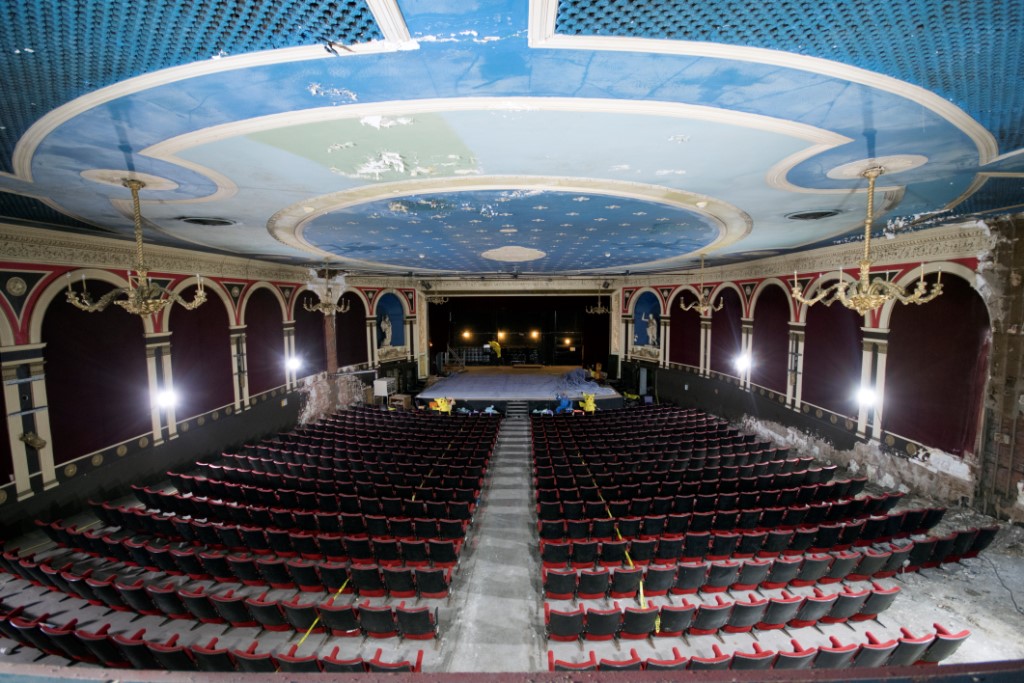
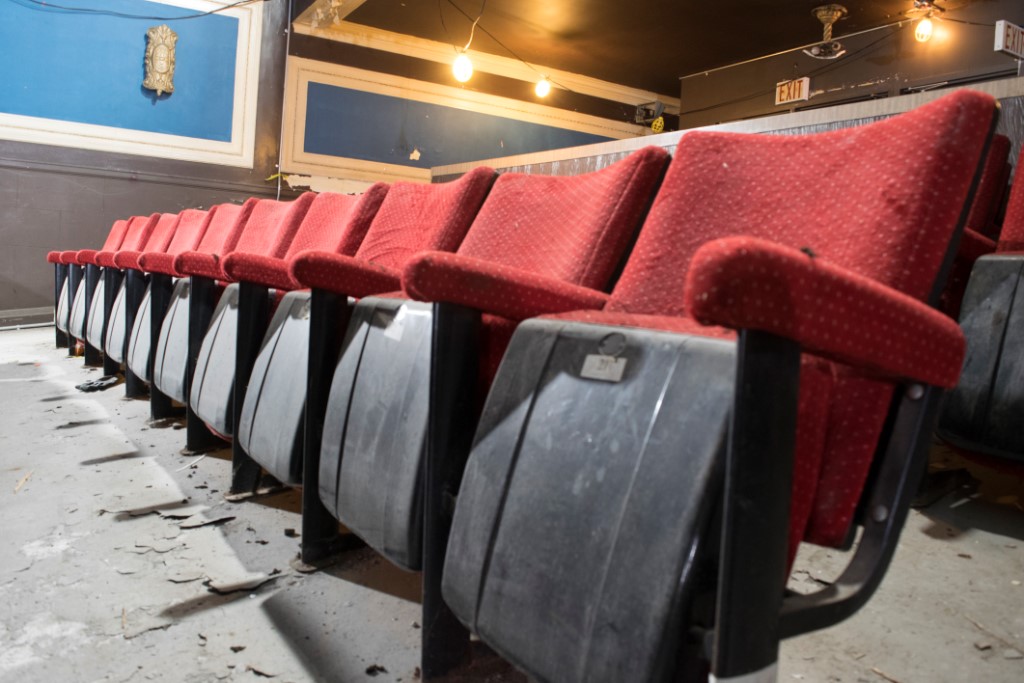
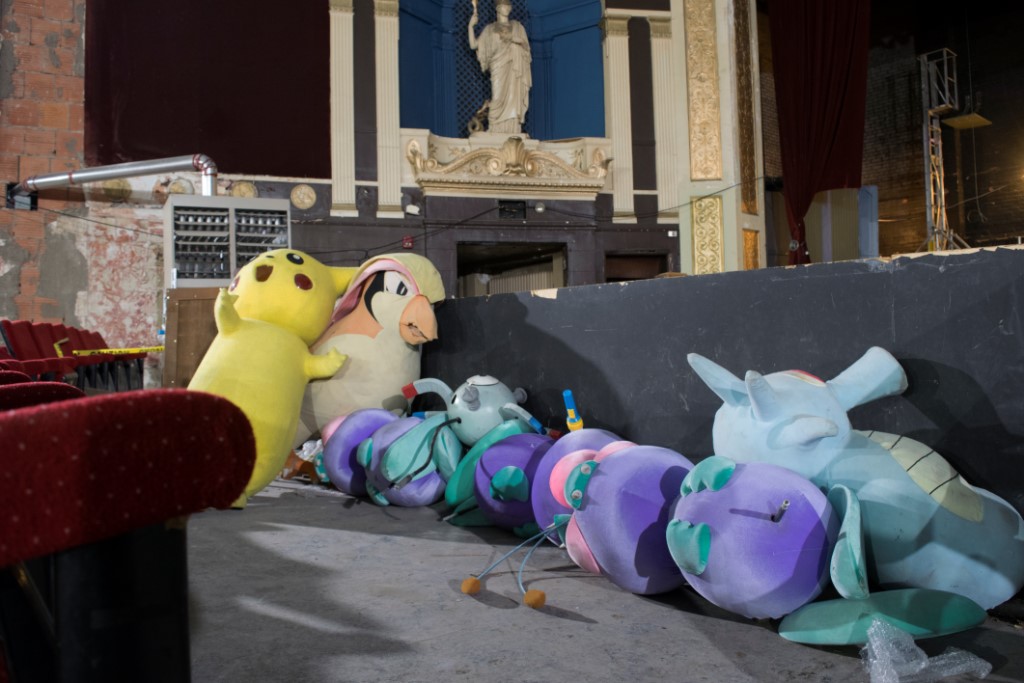
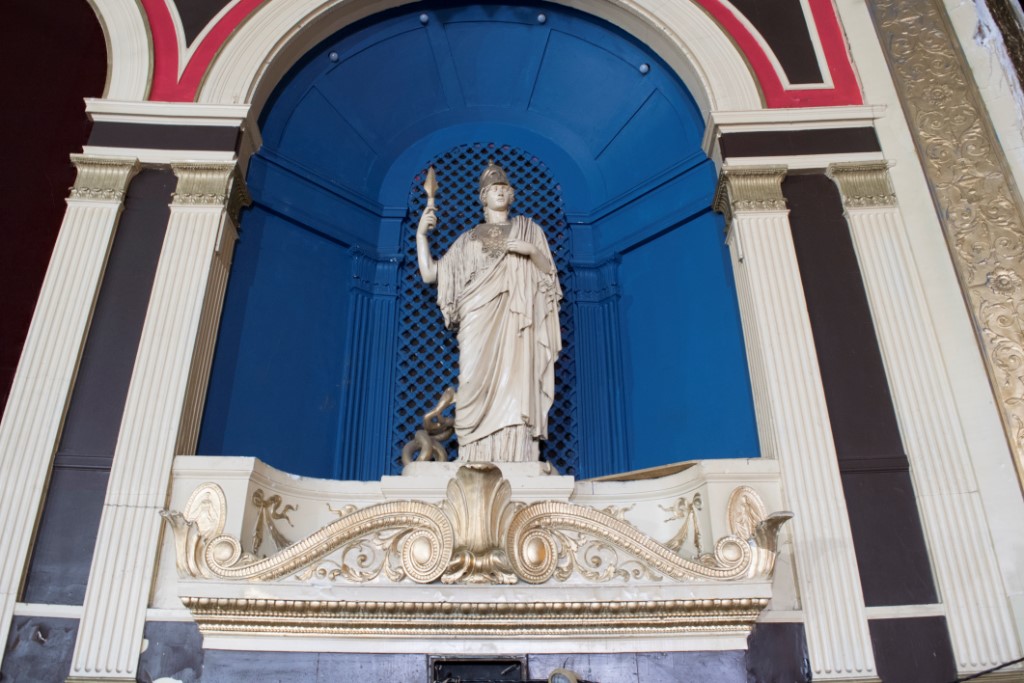
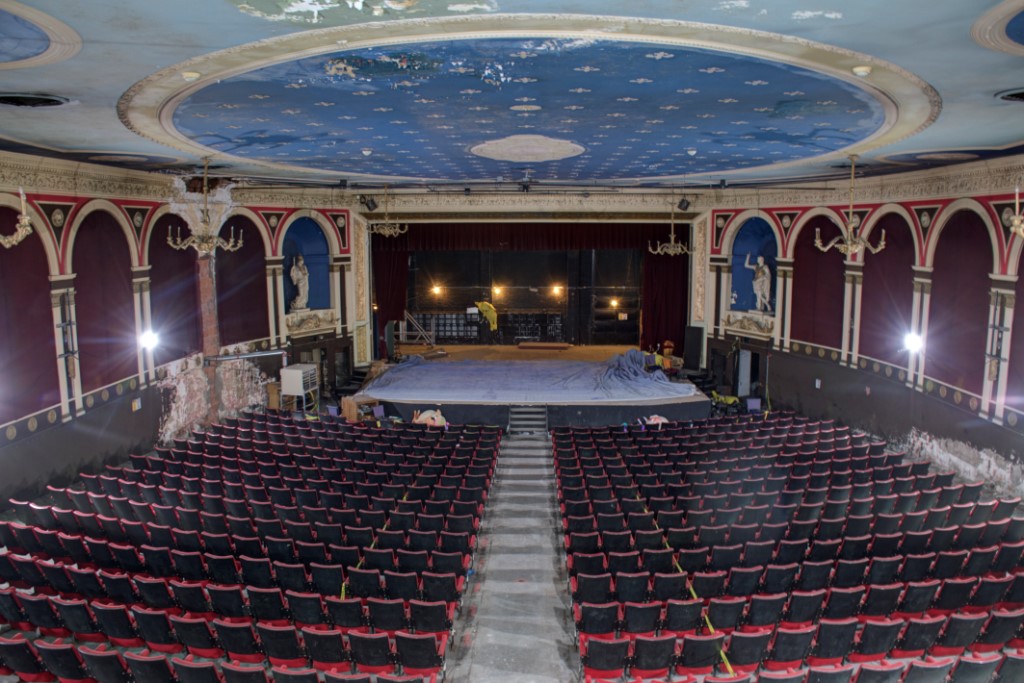
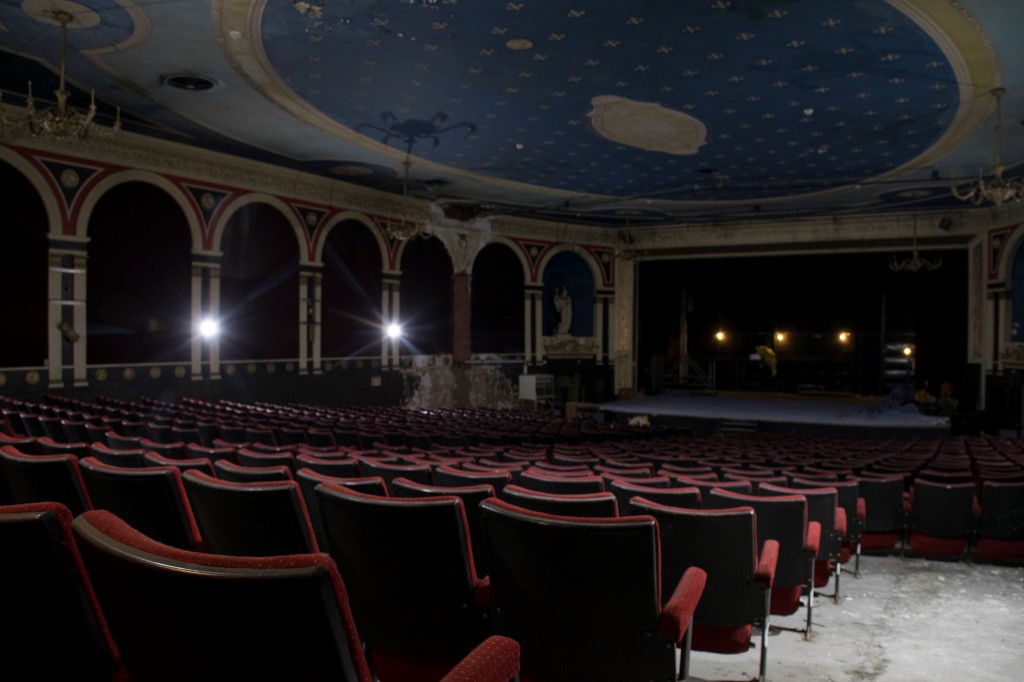
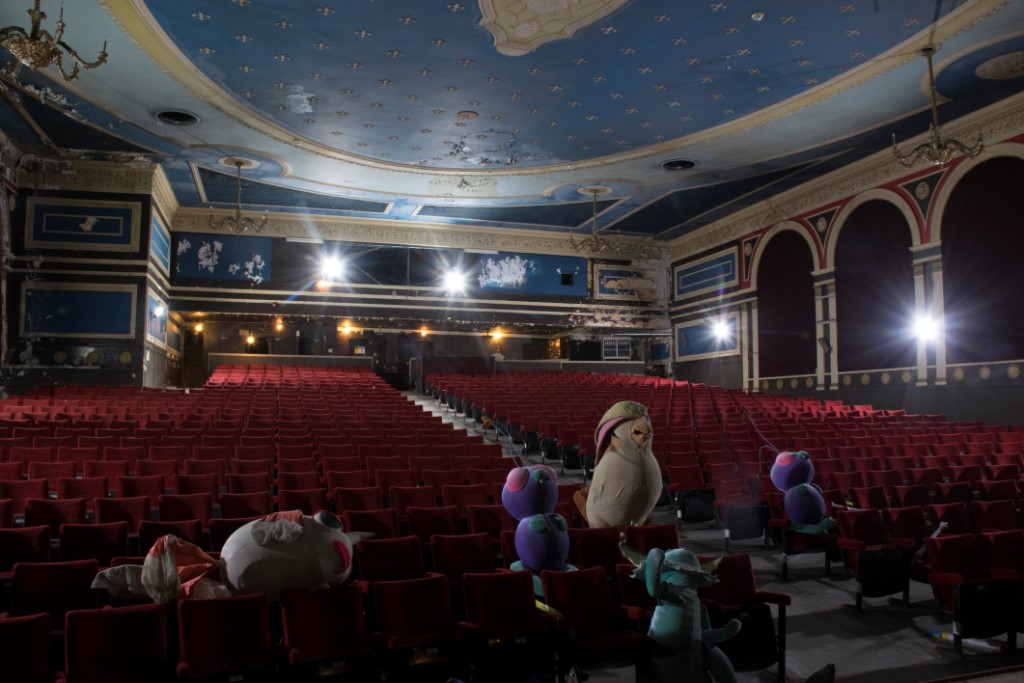
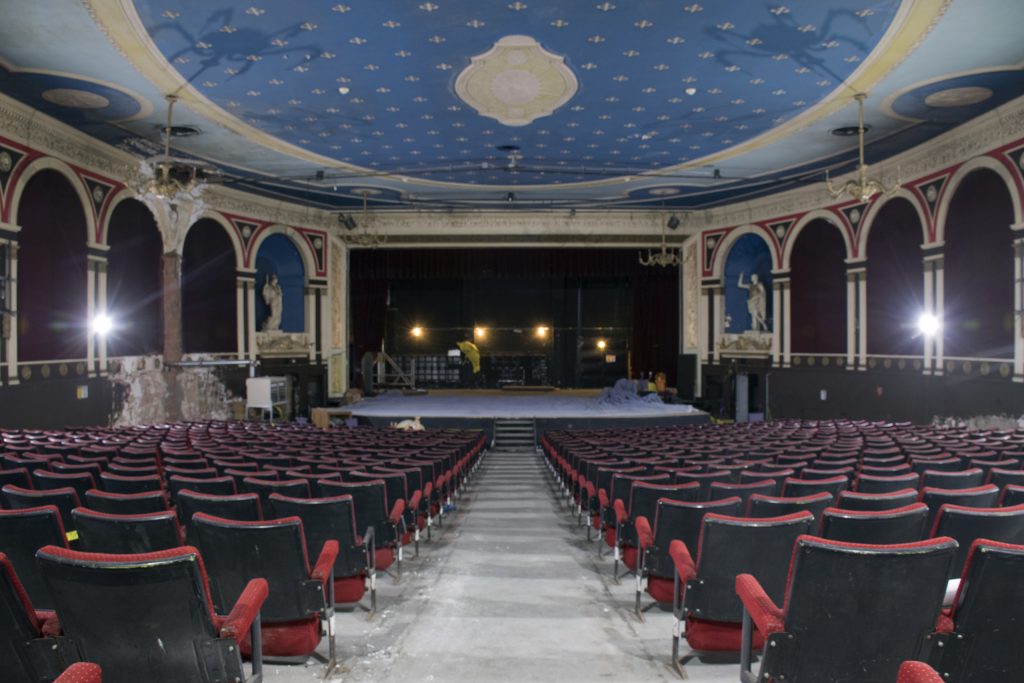
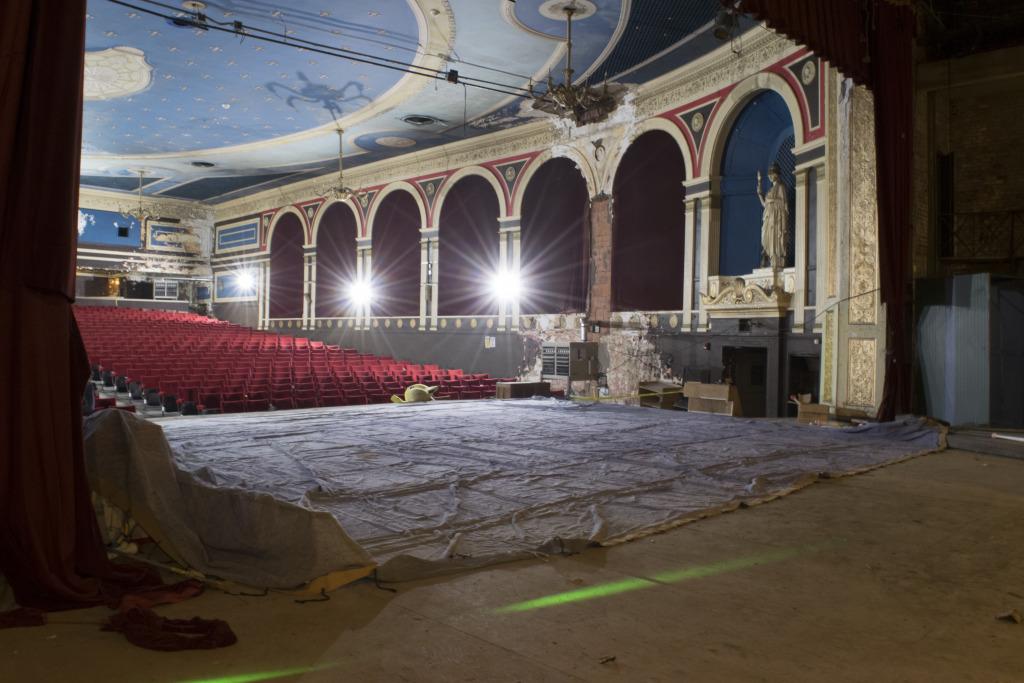
The former lobby was damaged on June 29th, 2004 and subsequently demolished after contractors determined the wall was dangerous. The City of Hamilton took over the property, secured it and removed the third floor, front wall, cupola and the marquee sign. The following year the Sniderman family applied for a demolition permit to demolition the 750-seat structure.
The property was then sold to the CEO of the Canadian Ballet Youth Ensemble for $2.
The dance company was unable to keep up with the repairs on the aging structure and in 2013 it was sold to the CEO’s husband Domenic Diamante. Diamante is head of Diamante Investments.
Diamante Investments plans to build a new lobby that will lead to a restored auditorium. In addition a 22-storey condo tower will be built on the site. The tower would supply the revenue required to restore the theatre. The plaster work and mouldings would be preserved and restored as part of the heritage process. Diamante Investments would then donate the completed theatre back to the Ballet Ensemble in a partnership plan that would have to be arranged. The City of Hamilton approved the developer’s proposal to build the condo tower and restore the theatre.
In 2015 their proposal was approved with the condition that the theatre open before the condos.
After the theatre closed, it was sold to the CEO of a dance company. The company wasn’t able to maintain the aging building and the building sold to the husband of the CEO.
Plans for a condo tower have been proposed which include restoring the theatre.
As with many other explorers, entry into this location took repeated visits to check for a way inside. What might be locked one day, could be open the next. Sometimes kids leave a door open, other times it might be a forgetful employee. I waited over a year to get into this location and it did not disappoint.
Demolition
In September of 2025, Aventus Group began preparing the building for conversion into new condos. This involved tearing down an interior wall. They claimed that it wasn’t ‘demolition’, the City of Hamilton disagreed. Aventus was required to obtain a demolition permit before they could continue.


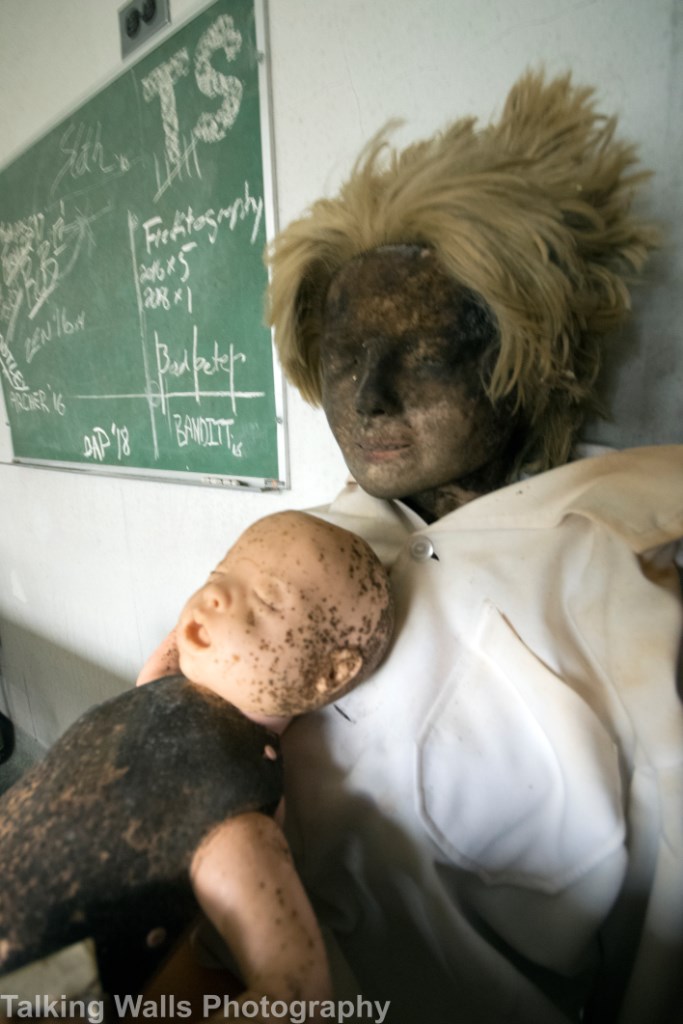
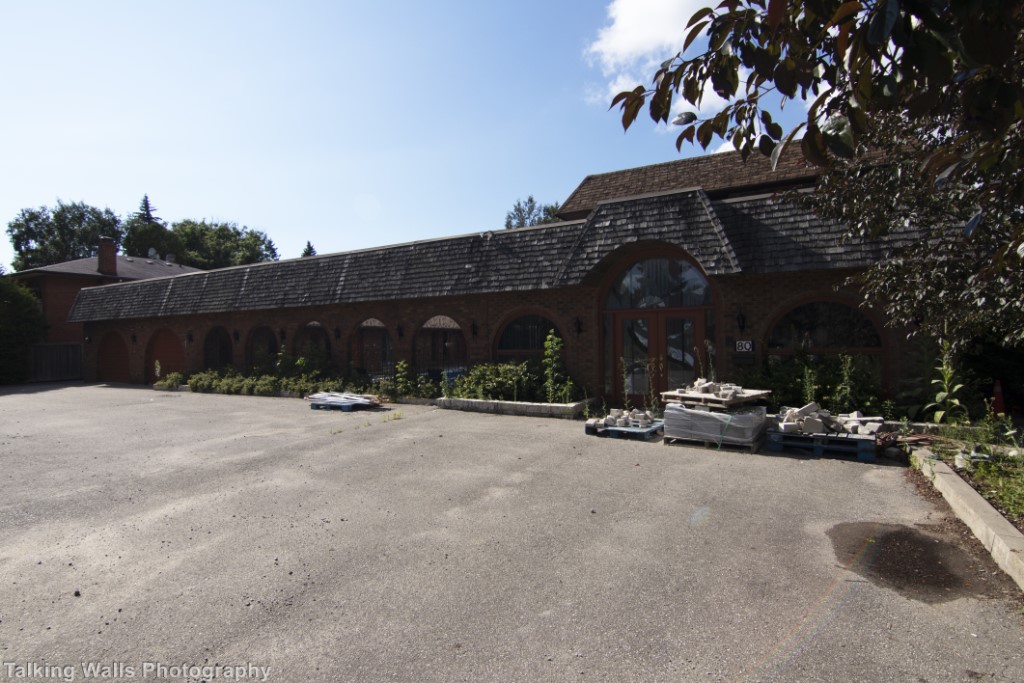

The building first opened as a live performance venue in October 1991 with the play HOW COULD YOU Mrs DICK by Douglas Rodger. The play ran for 3 months that fall playing to more than 30,000 people. After that it was small theater productions and concerts which lasted for about a year prior to the crossfire Church taking over the building. I’m heartbroken that it’s finally coming down.
Very interesting discoveries. Plan on reading more.
This theatre was used for a church (Crossfire Assembly) from at least 1993 until 1995 or 96. I know because I attended and worked at that church for a while during this time, and I have many memories of that theatre. The furnace died one winter (a huge, ancient thing in the basement) and we had one of those construction site heaters that look like a jet engine heating the interior for our church service (it was still cold!). We also ran a huge inner-city kids club ministry (today called City Kidz) out of the 3rd floor of the now-demolished building that housed the lobby of the theatre.